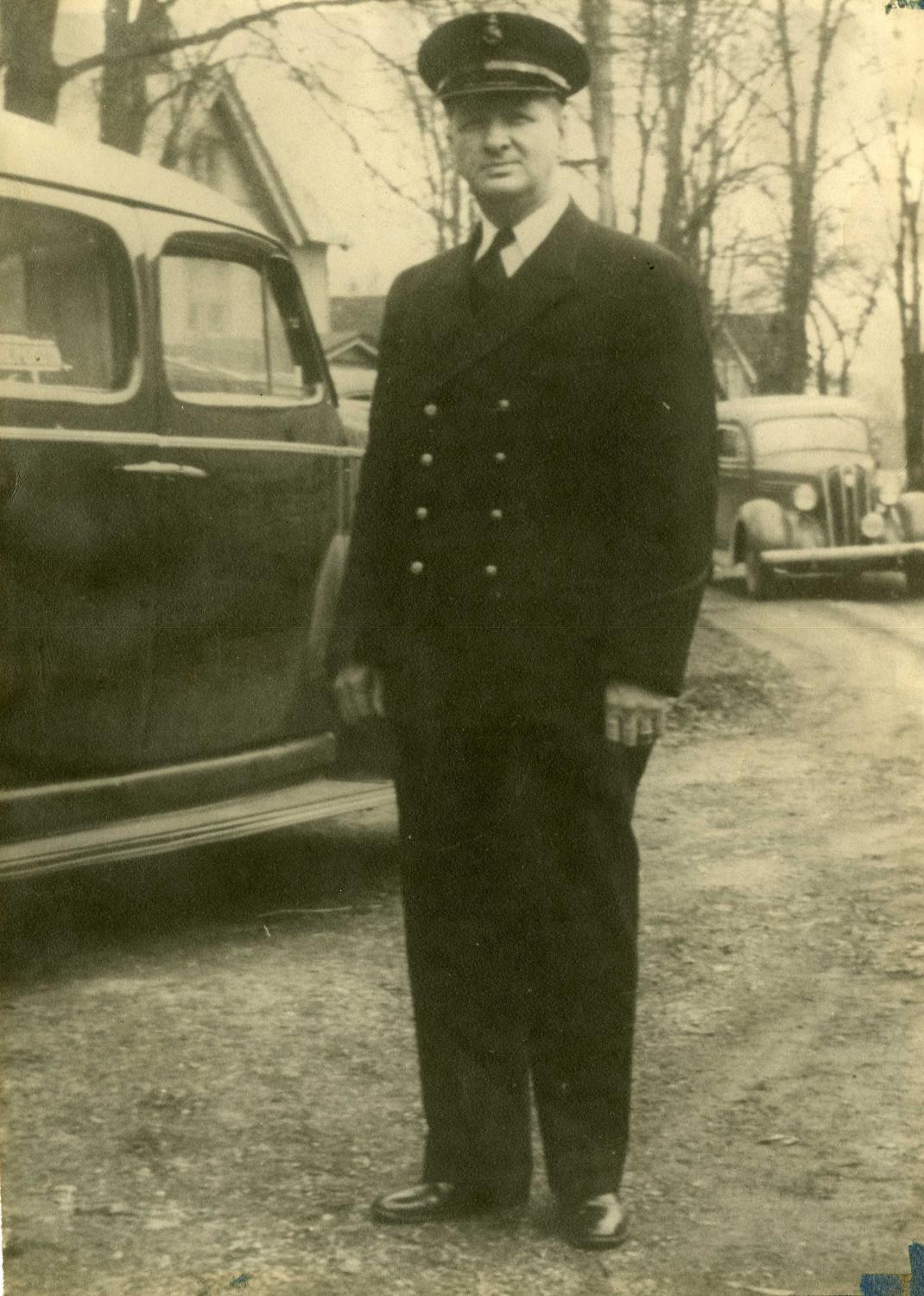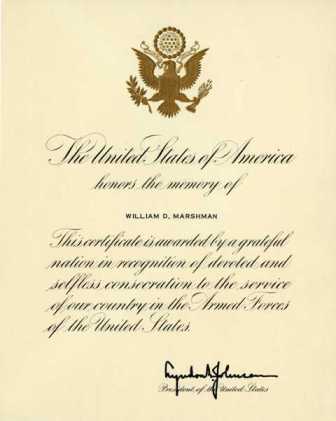

William D. Marshman
William D. Marshman was born April 2, 1897 in Oxford, New York. On September 17, 1915 at the age of 18, Marshman enlisted in the United States Navy and was assigned to the destroyer U.S.S. Melville. On May 11, 1917, a month after the United States entered World War One, the U.S.S. Melville set sail for Ireland as part of the Atlantic fleet. Throughout the war, Marshman, aboard the U.S.S. Melville, performed repair and support operations in the Atlantic. On September 5, 1919, after four years of service, including World War One, Marshman was discharged from the United States Navy. On February 13, 1942 Marshman reenlisted in the United States Navy. He was assigned on August 10, 1942 to the Navy destroyer U.S.S. Barton. The U.S.S. Barton departed for the South Pacific on August 23, 1942, arriving at the Tonga Islands on September 14, 1942. During his time in the Pacific, Marshman participated in the Battle of Santa Cruz Islands as the U.S.S. Barton escorted the U.S.S. aircraft carrier Hornet. During the battle on October 26, 1942, the U.S.S. Hornet was sunk by Japanese torpedoes. On November 13, 1942, Marshman was onboard the U.S.S. Barton, and after escorting transports into Ironbottom Sound off Guadalcanal, joined a task force to head off Japanese ships headed for Guadalcanal. The task force sailed into the middle of the Japanese force and was completely surrounded before any shots were fired. Training its guns on several Japanese ships, the U.S.S. Barton waited for orders. When a Japanese destroyer turned on its searchlights, both sides opened fire in the First Naval Battle of Guadalcanal. While fully enveloped by the Japanese force, the U.S.S. Barton fired point-blank range on Japanese ships, trying desperately to avoid a collision with other ships in the fighting. After firing torpedoes, the U.S.S. Barton abruptly stopped to avoid colliding with a ship that had cut in front of her. Momentarily dead in the water, the U.S.S. Barton was struck by two Japanese torpedoes that hit both its boiler and engine rooms. The explosions caused the U.S.S. Barton to break in two and sink in a matter of minutes. Of its crew, 164 men were killed and 68 were rescued. Marshman, a veteran of both World Wars, was killed and went down with the ship when the Barton sank on November 13, 1942 during the Naval Battle of Guadalcanal. Marshman was 45 years old.
By Tanner Christy


